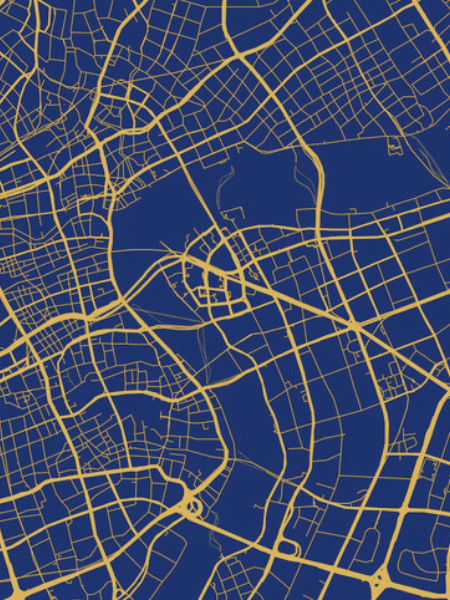
Read this high-level summary of the connections reform and start preparing ahead of fast-approaching deadlines to secure a place in the new queue for grid connections.
On 15 April 2025, Ofgem approved the TMO4+ Connections Reform package. The reform aims to revolutionise the electricity connections process in Great Britain by clearing and reshuffling the long connection-to-the-grid queue through a prioritisation process of advanced and necessary projects to implement the ambitious Clean Power by 2030 Action Plan (CPAP) for a decarbonised energy system by 2030. CPAP sets specific capacities per technology at regional, zonal and national levels, which must be followed in the prioritisation process.
This high-level summary provides an overview of the key components of the reform, the implementation timeline, and how those affected should start preparing.
Ofgem's decision package
Ofgem's decision package approves:
- The Connection and User System Code (CUSC) modifications CMP434 (new projects) and CMP435 (existing projects), and the consequential modification of the System Operator - Transmission Owner Code (‘STC’) CM095 that will enable the implementation of CMP434.
- The three connections methodologies:
- The Gate 2 Criteria Methodology, which sets out the criteria for prioritising projects to connect forming a new queue of prioritised projects – Gate 2.
- The Project Designation Methodology, which sets out the process the National Energy System Operator (NESO) will follow to prioritise projects that are critical to security of supply; are critical to system operation; materially reduce system/network constraints; are highly innovative or have particularly long lead times ('designated projects').
- And the Connections Network Design Methodology (CNDM), which sets out the process that NESO and network companies will follow to create the new Gate 2 queue.
- The changes to the Electricity System Operator, Transmission Operator and Distribution Operator licences to bring consistency in the conditions with the new TM04+ process.
A tale of two gates
The reform introduces a new two-gated process for new and existing projects. From 10 June 2025, NESO will make connections offers in application windows opening twice a year, called 'Gate 1' and 'Gate 2'. The process will create two queues: a firm Gate 2 queue with prioritised projects that will be connected (A); and indicative 'waiting list' Gate 1 queue with deprioritised projects (B).
Gate 2: Prioritised projects with confirmed connection date and point
The rule: Projects that meet the readiness criteria ('ready'), i.e., with secured land rights and sufficiently progressed planning status, and the strategic alignment criteria ('needed'), i.e., required under the CPAP permitted capacities to 2035, will receive a connection offer with a confirmed date and connection point.
Projects will have to provide evidence they meet the relevant criteria when the application window for Gate 2 opens. More detail on the readiness and strategic alignment criteria is found in the Gate 2 criteria methodology.
Protected projects: Several projects in the existing queue will benefit from three protection clauses and will get a guaranteed place in Gate 2. These are:
- Projects due to commission in 2026: These will be automatically considered as 'needed' and will maintain the same connection date and location as in the existing queue.
- Other 'significantly progressed’ projects, including projects with planning consent; holders of a Contract for Difference (CfD), holders of Capacity Market agreements; long duration electricity storage, interconnector or offshore hybrid asset Cap and Floor agreement or Merchant Interconnector approval; and live contract with NESO awarded through their 'Network Services' processes.
In its decision approving the Gate 2 criteria methodology, Ofgem recommends NESO to change the methodology by 30 April and provide assurance of retaining connection date and points for projects with planning consent and existing agreements to connect on or before 31 December 2027.
- Projects obtaining planning consent after the closure of the application window. Ofgem in the approval decision recommends NESO to simplify this protection by 30 April so that projects with (i) submitted planning on or before 20 December 2024 (ii) have no outcome by the closure of the CMP435 application window and (iii) achieve consent after the closure of the CMP435 application window are eligible to receive Gate 2 terms in a future CMP434 window even if this would breach zonal or national permitted capacities, as these capacities are defined in CPAP.
Discretion: NESO will also have some discretion to prioritise projects that are not ‘ready’ and ‘needed’ through two processes. The first is project designation. This will allow NESO to add to Gate 2 queue projects needed for specific reasons in line with the Project Designation Methodology. The second is capacity reservation allocated to Gate 1 projects that also allows advancement of projects to fill in under-supply of CPAP permitted capacity*.
Gate 1: Deprioritised projects with indicative connection date and point
New and existing projects either not 'ready' or not 'needed' will be deprioritised and moved to Gate 1**.They will get an indicative date and location of connection. However, if in the future they meet the readiness and strategic alignment criteria, they can reapply to move to Gate 2 once a new application window opens.
Mirroring TMO4+ at distribution level
The new process applies to projects at transmission level. It also applies for generation and storage projects that connect at distribution level and require a transmission impact assessment (TIA). The threshold for TIA is currently set at 200 kW in Scotland and 1 MW in England and Wales. However, a live code modification CMP446 seeks to increase the TIA threshold to 5 MW, freeing up more space of connected capacity at transmission level.
Distribution Network Operators (DNOs) will apply a process mirroring TMO4+ at distribution level for new and existing projects. Applications that do not meet the readiness and strategic alignment requirements will move to a Distribution Gate 1. Projects will apply for a Gate 2 offer through the DNO with NESO performing the final determination and checks of the Gate 2 criteria. To facilitate the procedure, DNOs are expected to act promptly when submitting project information to NESO and within the timeframes of TM04+ process.
TMO4+ implementation timeline
Ofgem's decision identifies the following key dates and milestones for the ambitious implementation of the TMO4+ reform, with all 2030 Gate 2 offers being issued by early 2026:
- May 2025: The evidence submission window for distribution projects to submit evidence to their respective DNO opens.
- 10 June 2025: The new process starts following a standstill period of 56 days after the approval decision on 15 April to allow for the relevant licence changes, followed by a notice period of 4 weeks as required by the new CUSC requirements.
- July 2025: The Gate 2 evidence submission window for transmission connecting customers opens with NESO publishing the exact dates for the window in a minimum of 4 weeks' notice.
- September 2025 onwards: NESO indicates to projects whether they have been successful in securing a place in the reformed queue.
- Autumn 2025: NESO and network companies will start issuing revised offers, with an initial focus on projects connecting in 2026 and 2027.
- Before the end of 2025: NESO will work to open the next window for new applications.
What project developers need to do?
The new Gate 2 to whole queue will likely drop to c.296 GW (including built capacity) aligned with CPAP capacities out to 2035. Ofgem estimates that approximately 482 GW of projects will be moved to Gate 1 for not meeting the readiness or strategic alignment criteria.
With the application windows at distribution and transmission level to create the Gate 2 to whole queue fast approaching, project developers with existing agreements who wish to apply for a Gate 2 offer, must start preparing to submit evidence to prove their projects meet the readiness criteria. NESO has already published documentation and guidance in preparation for evidence submission, including a draft of the Readiness Declaration template, updated guidance for Letters of Authority (LOA), and updated information on queue management guidelines. NESO will publish soon more information and guidance, run webinars, and establish a dedicated portal to submit evidence.
Reach out to our team of energy law experts if you require further information or support in your gated connection journey.
* For those technologies where regional capacities are provided in the NESO can undertake ‘rebalancing’ and ‘substitution’ of zonal capacities. This includes adjusting the capacity allocated to the same technologies in adjacent or overlaying zones (including across Transmission and Distribution) as appropriate, to balance over- and under-supply of projects. More detail of rebalancing and substitution is provided in our Decision of the Gate 2 Criteria Methodology. Demand-only projects are automatically deemed as needed.’ Summary decision document point 3.2, pages 25-26.
** Existing projects that are either not ‘ready’ or not ‘needed’ will have their contract varied and be provided with a conditional offer, with an indicative connection date and location. They will need to reapply in a future application window, when they can show they are ‘ready’ and ‘needed’, to be granted a confirmed Gate 2 offer.’ Summary decision document, 3.5, pages 26-27.
This article is for general information only and reflects the position at the date of publication. It does not constitute legal advice.





